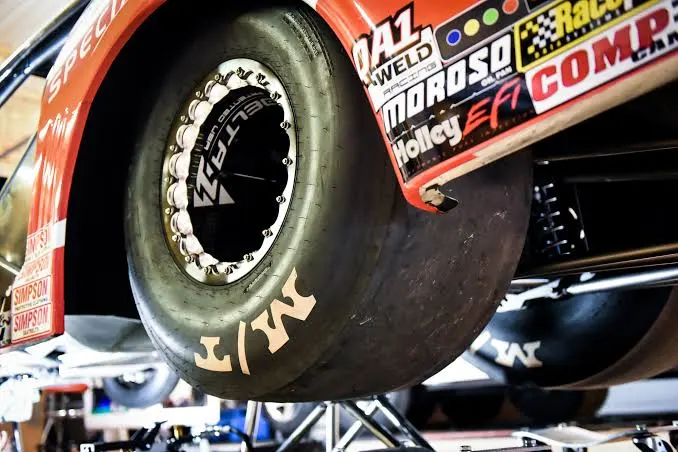In drag racing, every second counts—in fact, every tenth of a second counts. Racers depend on traction and grip on the track to ensure the efficient use of their car’s power.
While enhancing your vehicle with a Holley Sniper EFI increases power in your engine, drag tires may play a more crucial role in finishing times.
The tires provide superior control that can shave milliseconds off your time, which is often the difference between first and second place.
3 Types of Drag Tires
Different drag tires are available depending on your racing style and requirements. The three categories of racing tires are slicks, radials, and DOT-approved.
Drag slicks have minimal or no tread, offering superior grip and traction. The tires use a soft rubber compound that adds to their traction and control, allowing for fast launch times.
Unfortunately, drag slicks are usually not street-legal and wear out quicker than other options. Also, these tires require prep and are sensitive to track conditions.
Drag radials come in street-legal and non-street-legal varieties. They typically have a minimal tread, allowing for better grip and traction in wet conditions.
Also, the tires are more predictable and forgiving than slicks and have a longer lifespan. The primary drawbacks of radials are that they are not allowed in all racing classes and don’t offer as much grip as slicks.
Lastly, you have DOT-approved drag tires. These tires are excellent options for beginning drag racers because of their dual purpose.
That said, the tires are not as grippy and may not be allowed in some racing classes. The best tire for you will depend on your needs, racing requirements, and budget.
Budget, Control, and Lifespan
An SBC EFI intake manifold and a powerful vehicle may not matter if you purchase the wrong racing tires. When buying tires, you need to consider your budget, the control the tire offers, and the lifespan of the tire.
How much can you afford? Drag slicks are the most expensive tires and have the shortest lifespan. Also, slicks are the least predictable out of any drag tire. Still, depending on your racing class, you may have no choice but to invest in the tires.
Radials offer significant grip with moderate control, but they are cheaper than slicks. Still, the tires are expensive. Another benefit is that, depending on the type, they might be street-legal. That said, some racing classes prohibit the use of radials.
DOT-approved tires are the most affordable option, but they are often not allowed in races other than amateur events.
These tires offer control and grip with significant predictability. They also have a moderate wear life, which is better than slicks.
Choosing the right tire for your race car depends on many factors, including your budget, racing goals, and vehicle power and weight.
If you need help choosing racing tires, contact a local performance shop to discuss racing class and track conditions with experts. People with expertise can provide options that fit your needs.

